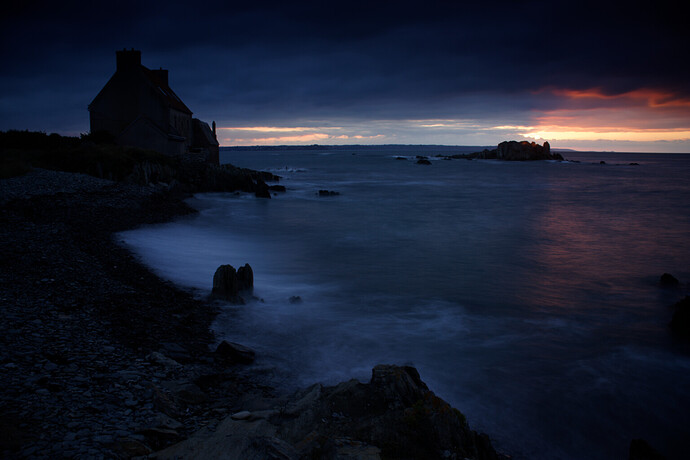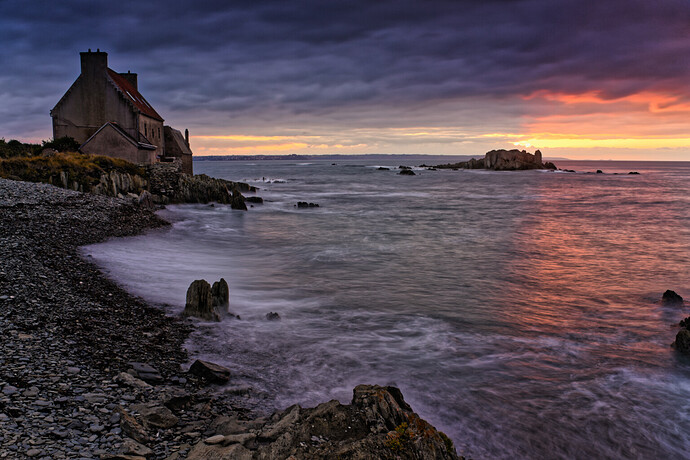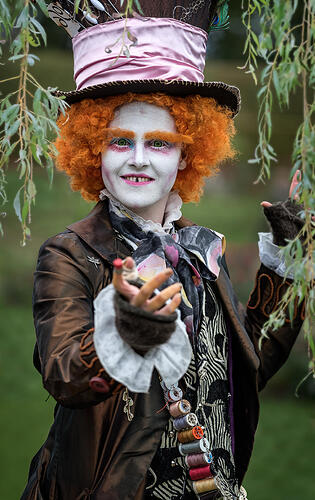You are right, most people won’t care about the ethics of how I achieved an image, but I care.
Sort of like what I’m thinking about, instead of giving you the benefit of the doubt, he though you were “cheating”. Why would he think that? Because it’s all to easy to “cheat”. Assuming the rules specified original photos, he should have given you the benefit of the doubt - but let’s get back to this forum for a second, if PhotoShopping is banned, why would PL4 be acceptable? And to a new photographer, what I call “cheating” is no longer a big deal, as I think anyone can do it with a smart phone. That’s all the more reason why a “code of photographic ethics” should exist, to say what is, and is not, acceptable.
My head is spinning. I find it much more enjoyable to discuss how to improve images using PL4 as an editor, than to discuss the ethics of images. I guess I’m too stuck in the past, and too stubborn to accept that maybe those rules are no longer as useful as they were before digital came along.
George
Excellent, I need to save this link. It has a section on
a “Code of Ethics” and also a section on
“Why Manipulation Matters”,
What counts as Manipulation, and
How is manipulation detected".
Not only that, but:
“all photographers submit original camera files for entries remaining in the second to last round”.
I read all the text, and watched the videos. As a photojournalist, it all makes sense, and is essentially what I was taught, but it goes much further.
They are being very strict as to what defines a photograph, and how to prove it.
I guess the things they are disallowing, would all become “photo illustrations”.
Thank you for posting - the next time I get into a similar discussion, I will remember this link.
Good! It isn’t about making a image. 
It’s about , mostly rawfiles because those can be molded the most, trying out things.
Streetlight and shadows great for working out how many ways there are to compres highlight and lift shadows. Does it look unreal? Most likely.
Take flowers and create a flower in a different color in post.
It isn’t about ending up with something you might export to keep.
This is all about the HSL tool. Finding out what it could do for me.
When it just was made and given to us by dxo i was intriqued. Do i like it? Do i need it? Can i understand it’s working?
Fooling around do things just because i can , see what happens and can i counter upcomming problems?
And i did the same for controlpoints. Brush Masking, invert , copy modify all kinds of trick’s and skills. Did i end up with real endresults? Yes do you like them as in would they be reality? No not all but those blunt overstretched tryouts are the bases for the subtle corrections i can do now on other images.

Which is all very well and good if you are submitting work that has to be factually accurate but, unless that is your current job, don’t limit yourself unnecessarily to such strict codes.
Anyhow, that code seems more concerned with adding things to images rather than simply improving its visual qualities…
Entrants are encouraged to explore techniques that serve the cause of visual journalism. Different cameras and lenses can achieve particular effects. Varying aperture and exposure settings can record the scene in different ways. Altering ISO settings and the use of flash lighting enables less visible situations to be recorded.
This means photography gives us a creative interpretation of the world.
Especially with RAW files, you have usually got to do some “manipulation” simply to get the image into a viewable state.
Let me cite again one of my favourite examples of the need for such manipulation…
SOOC
After PhotoLab
This is what I really saw and experienced when I was taking the shot.
But it’s not just edited in PhotoLab to rebalance the distribution of tones, I also had to use two physical graduated neutral density filters at different angles in order to bring the range of light to within the capabilities of the sensor.
All these “manipulations” in no way detract from the ethics of making an image that reflects truly what the photographer experienced at the time. OK, I removed the flare on the rocks to the right but that is an artefact of the lens on the camera, not what I could see with my eyes.
With my eyes I could also see a great deal more detail in the shadows but, in order to avoid that horrendous over-processed HDR look, I chose to represent the shadows in a way that makes sense to someone viewing the image.
Mike, I’m not suggesting you loosen up on your ethics (when it comes to journalistic integrity), just that, as @Wolfgang says, you take time to enjoy making images which are not destined for the scrutiny of journalistic competition judges 
Oh, and if you really want to challenge your ethics…




@Joanna, thank you for this link – very cinematic!
Wolfgang
just checked for this guy and came across https://blog.flickr.net/en/2020/12/28/16-questions-about-one-photo-with-blaise-arnold/ >> question 12.
Muhahaa! Best answer!
what is reality – does it matter?
@mikemyers – it’s all about fun, not to fool people
Enjoy and don’t limit yourself,
Wolfgang
Some other example of manipulation https://en.wikipedia.org/wiki/Censorship_of_images_in_the_Soviet_Union.
Or google on ‘there’s no way like the american way’.
https://www.wikiwand.com/en/Margaret_Bourke-White.
You will find full images and cropped images. The last one without the black people, a complete different message.
George
To be honest, by the time I got a third of the way through these photos, I saw a nice collection of photos from the past, with a third of the photo blocked by stuff added on later - I found my self feeling annoyed that I couldn’t see the entire original photo.
I’m sure a lot of work went into doing this, but it was completely wasted on me, not to mention that the person(s) who captured the real image aren’t getting credit for the photo.
I found myself staring at the background, paying next to no attention to the stuff blocking my view.
Ethics? if ethics were involved, the original photographer should be given credit. To me, the new stuff added on top just damages the photo that I find myself wanting to see.
Since this is a forum, can I ask how each of you would feel, were someone to do this on top of one of your images, without your permission?
I guess how I felt, is when I go to a movie theater, and can’t see the whole screen because of someone sitting in front of me, blocking my view. Annoyed would be pretty close, but I’m sure I would have changed seats long before I got to the end.
Actually, you are seeing the entire original image - or should I say images, composite that is? Blaise takes every part of the photo himself, travelling to locations, finding props and models and photographing some of them in situ and sometimes others, like the props and models, in a studio.
See this interview here for more insights…
Then he assembles everything to make the one overall image.
Joanna, sorry, but I don’t think “manipulated” applies to your photos. What you did was adjust the image so people could view what was there. Had you moved the rock to the right, THAT would be manipulation, and wrong.
As I see it, what you do is bringing out the information that was captured in the scene. You’re enhancing the reality, not creating it.
Everything you showed WAS captured in the original raw image file, so those contest rules would leave you free and clear. Noplace did they say the image had to be captured as a ‘jpg’, and if they wanted the original, you could have simply sent them the raw file.
Anyway, that’s my opinion, and obviously the contest rules aren’t adequate as written. A raw file captures more than a jpg. An infrared file captures things the human eye can’t see.
If you deliberately made your print much darker, to hide something you didn’t want to show up, that would be different, and you would, and should, be disqualified. But all you are doing, is bringing out all the detail captured by the camera as a single image, and a single file.
Maybe I’ll write them and ask about this.
I would love to have the skill to be able to do what you do, as well as you do it. I’m getting closer, so I’m happy about that, but you are much more of an artist than I ever will be. I ain’t never gonna catch up with you!!! …but I’m getting better just from trying.
Then they would have found out that I “deleted” my friend Helen, who I didn’t spot, taking a photograph from in front of the vertical rocks under the left of the house 
But then this is an art photograph, not a factual record.
I always used the waist level finder with the M645 and took many images less. Not because a WLF is more difficult to use, but because it makes a difference to look down at an image instead of looking at a sight through a device. The WLF introduces a level of abstraction that helps in many ways.
I lost track of what we were discussing, but I do know and understand what you mean. I know it is somehow “different” for me to view things through the optical window on my Leica, or the huge window on my DSLR, and I think you just explained the reason why. With the DSLR, the resulting file will likely be exactly what I viewed in the viewfinder (unless I warped it in the camera settings) and the Leica, just like with my ancient film cameras, was sort of an approximation of what I would capture. Viewing the world through my Leica is like seeing it with my eyes, no manipulation, no enhancing, since all it is, really, is a window.
I actually do have a WLF for my Nikon F2 - I was looking it over yesterday. Maybe part of the reason I enjoyed film so much, was that there were just a set of mechanical controls, and a button to capture the image. With the WLF, isn’t composing the image similar to what one might do on a ground glass screen on a view camera? It’s been so long, I don’t remember…
In that case, you would have gotten a DQ, unless you left her in the image.
I do know what you mean - as art, anything goes. It’s like painting, where you have full control of what is included in the image, or not.
(In my world, that crosses the line from photograph to photo-illustration, but that’s just me.)
about envision …
@mikemyers
When you talk about rules et al, you are only allowed to use a camera with roughly 47° viewing angle.
But the ‘manipulation’ starts with …
- the subject you choose
- the moment you choose to take the picture
- the excerpt (window), distance and camera position you decide for
- the aperture you choose (f2,8 vs f8 …)
- the exposure time you dial in (longtime exposure vs 1/50 sec)
- the use of filters
- available light vs artificial illumination
etc.
Then you develop your ‘true’ pic with software, like PhotoLab.
And the moment you …
- crop
- change exposure
- change color temperature / tonality
- change contrast
- brighten / darken parts locally (gradation, control points, using masks)
- convert to B&W
you continue to ‘manipulate’. – So, what do you expect in a forum about photo software?
Enjoy what YOU do, but relax. This is no contest, no photoclub …
and have fun, Wolfgang
This is a raw converter, not an image manipulating program. Though many do want it to become.
George



